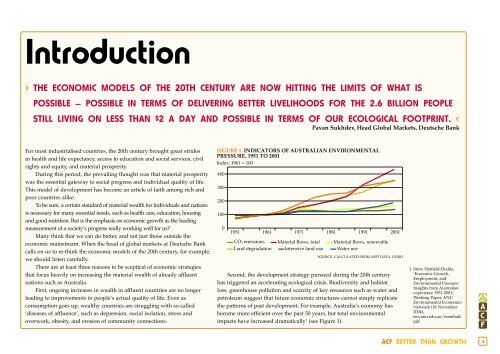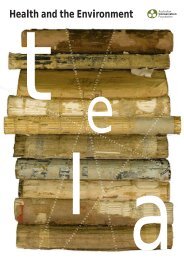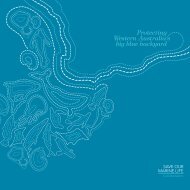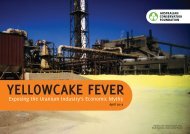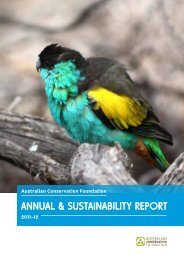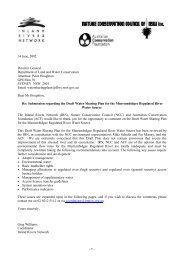Better than growth - Australian Conservation Foundation
Better than growth - Australian Conservation Foundation
Better than growth - Australian Conservation Foundation
Create successful ePaper yourself
Turn your PDF publications into a flip-book with our unique Google optimized e-Paper software.
Introduction<br />
› The economic models of the 20th century are now hitting the limits of what is<br />
possible – possible in terms of delivering better livelihoods for the 2.6 billion people<br />
still living on less <strong>than</strong> $2 a day and possible in terms of our ecological footprint. ‹<br />
<br />
Pavan Sukhdev, Head Global Markets, Deutsche Bank<br />
For most industrialised countries, the 20th century brought great strides<br />
in health and life expectancy, access to education and social services, civil<br />
rights and equity, and material prosperity.<br />
During this period, the prevailing thought was that material prosperity<br />
was the essential gateway to social progress and individual quality of life.<br />
This model of development has become an article of faith among rich and<br />
poor countries alike.<br />
To be sure, a certain standard of material wealth for individuals and nations<br />
is necessary for many essential needs, such as health care, education, housing<br />
and good nutrition. But is the emphasis on economic <strong>growth</strong> as the leading<br />
measurement of a society’s progress really working well for us?<br />
Many think that we can do better, and not just those outside the<br />
economic mainstream. When the head of global markets at Deutsche Bank<br />
calls on us to re-think the economic models of the 20th century, for example,<br />
we should listen carefully.<br />
There are at least three reasons to be sceptical of economic strategies<br />
that focus heavily on increasing the material wealth of already affluent<br />
nations such as Australia.<br />
First, ongoing increases in wealth in affluent countries are no longer<br />
leading to improvements in people’s actual quality of life. Even as<br />
consumption goes up, wealthy countries are struggling with so-called<br />
‘diseases of affluence’, such as depression, social isolation, stress and<br />
overwork, obesity, and erosion of community connections.<br />
FIGURE 1: INDICATORS OF AUSTRALIAN ENVIRONMENTAL<br />
PRESSURE, 1951 TO 2001<br />
Index: 1961 = 100<br />
400<br />
300<br />
200<br />
100<br />
0<br />
1951 1961 1971 1981 1991 2001<br />
CO 2 emissions Material flows, total Material flows, renewable<br />
Land degradation Intensive land use Water use<br />
SOURCE: CALCULATED FROM ASFF DATA, CSIRO<br />
Second, the development strategy pursued during the 20th century<br />
has triggered an accelerating ecological crisis. Biodiversity and habitat<br />
loss, greenhouse pollution and scarcity of key resources such as water and<br />
petroleum suggest that future economic structures cannot simply replicate<br />
the patterns of past development. For example, Australia’s economy has<br />
become more efficient over the past 50 years, but total environmental<br />
impacts have increased dramatically 1 (see Figure 1).<br />
1. Steve Hatfield-Dodds,<br />
’Economic Growth,<br />
Employment, and<br />
Environmental Pressure:<br />
Insights from <strong>Australian</strong><br />
experience 1951-2001‘,<br />
Working Paper, ANU<br />
Environmental Economics<br />
Network (18 November<br />
2004),<br />
een.anu.edu.au/esemhatf.<br />
pdf<br />
ACF BETTER THAN GROWTH 3


